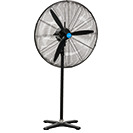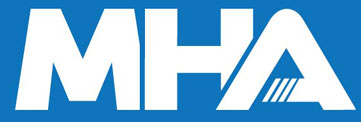How to Encourage Employees to Always Use Their Safety Equipment
Date Posted:31 October 2024
By leading by example, offering regular training, maintaining high-quality gear, and fostering a positive safety culture, companies can significantly improve compliance and reduce the risk of workplace injuries.
Workplace safety is a top priority for any business, yet one of the most common challenges is ensuring that employees consistently use the safety equipment provided. Regardless of the safety gear available—whether it’s hard hats, gloves, or safety harnesses - getting employees to use them regularly requires more than just providing the equipment. In this blog, we’ll explore effective strategies to encourage employees to always use their safety equipment, fostering a safer and more compliant workplace.
1. Lead by Example
One of the most powerful ways to influence employee behaviour is by demonstrating the correct practices from the top down. If managers and supervisors consistently use their safety equipment and follow safety protocols, employees are more likely to follow suit. This creates a culture where safety is a priority for everyone, not just those directly involved in high-risk tasks.
How to Implement:
- Ensure that all management personnel strictly adhere to safety protocols.
- Have supervisors perform routine safety checks while visibly wearing their own safety gear.
- Highlight safety compliance during team meetings, using leaders as role models.
2. Provide Comprehensive Training
Employees may resist using safety equipment if they don’t fully understand how to use it or why it’s necessary. Providing detailed training on the proper use of safety equipment ensures that workers know not only how to wear it correctly but also understand the risks they are mitigating.
How to Implement:
- Offer regular, mandatory safety training sessions that demonstrate the correct use of equipment.
- Make training interactive and hands-on, allowing employees to practice using the equipment.
- Update training materials regularly to include the latest industry standards and technological advancements.
3. Make Safety Equipment Easily Accessible
Sometimes, employees may skip using safety equipment simply because it’s inconvenient to access. If safety gear isn’t readily available or is difficult to locate, workers might take shortcuts that jeopardise their safety. Ensuring that safety equipment is easily accessible across the workplace can remove this obstacle.
How to Implement:
- Place safety stations at convenient and strategic locations, such as near entrances or work zones.
- Regularly check that safety equipment like gloves, helmets, and goggles are well-stocked and in good condition.
- Use visible signage to direct workers to nearby safety equipment stations.
4. Regularly Inspect and Maintain Equipment
Providing safety gear isn’t enough—ensuring it’s in good working condition is equally important. If employees perceive safety equipment as worn-out, uncomfortable, or ineffective, they may be less inclined to use it. Regular maintenance and inspection of gear help maintain its quality and increase worker trust in its effectiveness.
How to Implement:
- Establish a maintenance schedule for inspecting and replacing old or faulty equipment.
- Encourage employees to report damaged or uncomfortable safety gear immediately.
- Offer ergonomic and high-quality alternatives to outdated equipment to boost comfort and compliance.
5. Create a Positive Safety Culture
Safety culture is the collective attitude towards safety in the workplace. By embedding a culture where safety is prioritised and valued, employees are more likely to feel responsible for their own safety and the safety of others. A strong safety culture not only reduces the likelihood of injuries but also increases morale and teamwork.
How to Implement:
- Incorporate safety as a key element in the company’s mission statement or core values.
- Celebrate safety milestones, such as accident-free months, by offering rewards or recognition.
- Encourage employees to voice safety concerns and ideas during regular meetings.
6. Incentivise Safety Compliance
Offering incentives for consistent use of safety equipment is an effective way to encourage compliance. Rewarding workers for adhering to safety protocols reinforces positive behaviour, making them more likely to continue using their equipment in the future.
How to Implement:
- Implement a reward system that recognises employees for excellent safety practices, such as bonuses, gift cards, or extra paid time off.
- Offer team-based incentives for departments or groups that consistently follow safety guidelines.
- Acknowledge individual contributions by highlighting employees who exemplify safety in internal newsletters or during meetings.
7. Clarify the Consequences of Non-Compliance
While positive reinforcement is crucial, it’s also important to clearly communicate the consequences of failing to use safety equipment. Employees need to understand that neglecting to use safety gear can have serious implications—not just for their own health, but also for the company’s legal standing and financial well-being.
How to Implement:
- Clearly outline the disciplinary actions for not using safety equipment in the company’s safety policies.
- Hold employees accountable when they are caught without the necessary gear, issuing warnings or penalties if required.
- Provide statistics or case studies that highlight the real-world consequences of ignoring safety protocols.
8. Get Employee Feedback on Equipment
Involving employees in the selection and review process of safety equipment can significantly increase compliance. If workers find the equipment comfortable and easy to use, they are more likely to wear it. Gathering feedback on safety gear also helps identify any issues early, ensuring that employees have the best tools available to keep them safe.
How to Implement:
- Conduct surveys or focus groups to gather employee opinions on the current safety equipment.
- Consider ergonomics and comfort when purchasing new gear, ensuring it suits the physical needs of your workforce.
- Act on feedback promptly, making changes to improve the comfort or usability of the equipment when necessary.
9. Integrate Safety into Daily Operations
When safety becomes a seamless part of daily operations, it becomes second nature for employees to use their equipment. Embedding safety procedures into regular tasks ensures that workers view safety as a non-negotiable part of their job, rather than an additional step they can choose to ignore.
How to Implement:
- Begin every shift with a safety briefing that includes reminders about equipment use.
- Assign safety leaders in each department to oversee daily compliance and provide support.
- Make safety checklists part of everyday procedures, requiring employees to tick off safety protocols before starting their work.
10. Encourage Peer Accountability
Empowering employees to hold each other accountable for safety can create a sense of shared responsibility. Peer pressure can work positively in this context, as workers may be more likely to comply when they see their colleagues taking safety seriously.
How to Implement:
- Foster a team-based approach to safety, encouraging workers to remind each other to use their equipment.
- Train employees to look out for their colleagues and intervene if they see unsafe practices.
- Set up a system where employees can report non-compliance anonymously, without fear of retaliation.
Encouraging employees to consistently use their safety equipment requires more than simply providing it—it demands a proactive approach that integrates safety into the very fabric of the workplace. By leading by example, offering regular training, maintaining high-quality gear, and fostering a positive safety culture, companies can significantly improve compliance and reduce the risk of workplace injuries. At Verdex, we provide a wide range of high-quality safety equipment designed to keep your workforce protected. Start building a safer workplace today by ensuring your team is equipped and motivated to use their safety gear consistently.
































































































































 Trolleys & Hand Trucks
Trolleys & Hand Trucks Cage Trolleys
Cage Trolleys Cleaning Carts & Trolleys
Cleaning Carts & Trolleys Construction Trolleys
Construction Trolleys Custom Trolleys
Custom Trolleys Hand Trucks & Dollies
Hand Trucks & Dollies Laundry/Linen Trolleys
Laundry/Linen Trolleys Lifting Trolleys
Lifting Trolleys Order Picking Trolleys
Order Picking Trolleys Panel Cart Trolleys
Panel Cart Trolleys Platform Trolleys
Platform Trolleys Powered Trolleys
Powered Trolleys Shelf & Tiered Trolleys
Shelf & Tiered Trolleys Shopping Trolleys
Shopping Trolleys Stainless Steel Trolleys
Stainless Steel Trolleys Tool Trolleys
Tool Trolleys Utility & Service Carts
Utility & Service Carts Lifting & Handling Equipment
Lifting & Handling Equipment Forklift Attachments
Forklift Attachments Jib Attachments
Jib Attachments Lifting Hoists & Pallet Hooks
Lifting Hoists & Pallet Hooks Load Skates & Tow Tugs
Load Skates & Tow Tugs Manual Stackers & Lifters
Manual Stackers & Lifters Pallet Jacks
Pallet Jacks Pallet Lifters
Pallet Lifters Pallet Rotators & Dispenser
Pallet Rotators & Dispenser Powered Pallet Trucks & Electric Lifters
Powered Pallet Trucks & Electric Lifters Scissor Lift Trolleys and Tables
Scissor Lift Trolleys and Tables Conveyor Equipment
Conveyor Equipment Conveyor Frames & Stands
Conveyor Frames & Stands Roller & Skate Conveyors
Roller & Skate Conveyors Ladders & Access Equipment
Ladders & Access Equipment Container & Yard Ramps
Container & Yard Ramps Ladders & Step Stools
Ladders & Step Stools Work Platforms & Crane Cages
Work Platforms & Crane Cages Drum Handling Equipment
Drum Handling Equipment Drum Storage & Bunding
Drum Storage & Bunding Drum Trolleys & Lifters
Drum Trolleys & Lifters Forklift Drum Handling
Forklift Drum Handling Waste Handling & Bins
Waste Handling & Bins Bin Lifters & Tippers
Bin Lifters & Tippers Plastic Waste & Wheelie Bins
Plastic Waste & Wheelie Bins Steel Waste & Tipping Bins
Steel Waste & Tipping Bins Waste Carts
Waste Carts Dangerous Goods Storage & Spillage
Dangerous Goods Storage & Spillage Aerosol Cans Storage Cages
Aerosol Cans Storage Cages Bunded Pallets & Storage
Bunded Pallets & Storage Corrosive Goods Storage Cabinets
Corrosive Goods Storage Cabinets DG Storage & Trolleys
DG Storage & Trolleys Flammable Liquid Cabinets
Flammable Liquid Cabinets Forklift Gas Storage Cages
Forklift Gas Storage Cages Site Storage
Site Storage Spill Kits
Spill Kits Shelving & Storage Equipment
Shelving & Storage Equipment Stillage & Transport Cages
Stillage & Transport Cages 750 Series Cage Configurations
750 Series Cage Configurations Heavy Duty Cabinets
Heavy Duty Cabinets Heavy Duty Shelving
Heavy Duty Shelving Mega Bins & Pallets
Mega Bins & Pallets Packing & Workbenches
Packing & Workbenches Parts Trays & Stor-Pak Bins
Parts Trays & Stor-Pak Bins Pegboard & Louvre Panels
Pegboard & Louvre Panels Plastic Bins & Crates
Plastic Bins & Crates Plastic Handling Solutions Bins
Plastic Handling Solutions Bins Plastic Pallets
Plastic Pallets Stack & Nest Bins
Stack & Nest Bins Pallet Racking Accessories
Pallet Racking Accessories Workplace Equipment
Workplace Equipment Modular Workbenches
Modular Workbenches Electric Height-Adjustable Workbenches
Electric Height-Adjustable Workbenches Floor Matting
Floor Matting General Workplace Equipment
General Workplace Equipment Industrial Weighing Scales
Industrial Weighing Scales Packaging Machinery
Packaging Machinery Stationery Cupboards
Stationery Cupboards Storage and Stillage Cages
Storage and Stillage Cages Tool Trolleys
Tool Trolleys Tooling Cabinets
Tooling Cabinets Workshop Fans and Coolers
Workshop Fans and Coolers Safety Barriers, PPE & Signage
Safety Barriers, PPE & Signage Barriers & Bollards
Barriers & Bollards First Aid Equipment
First Aid Equipment Gloves, Knives and PPE
Gloves, Knives and PPE Signage
Signage Cleaning & Site Supplies
Cleaning & Site Supplies Cleaning Equipment
Cleaning Equipment Cleaning Trolleys
Cleaning Trolleys Rubbish Bins
Rubbish Bins Signs & Traffic Supplies
Signs & Traffic Supplies Construction Equipment
Construction Equipment Construction Trolleys
Construction Trolleys Waste Handling
Waste Handling General Site Equipment
General Site Equipment Concrete Equipment
Concrete Equipment Site Storage
Site Storage Lifting Equipment
Lifting Equipment Verdex Specials
Verdex Specials









